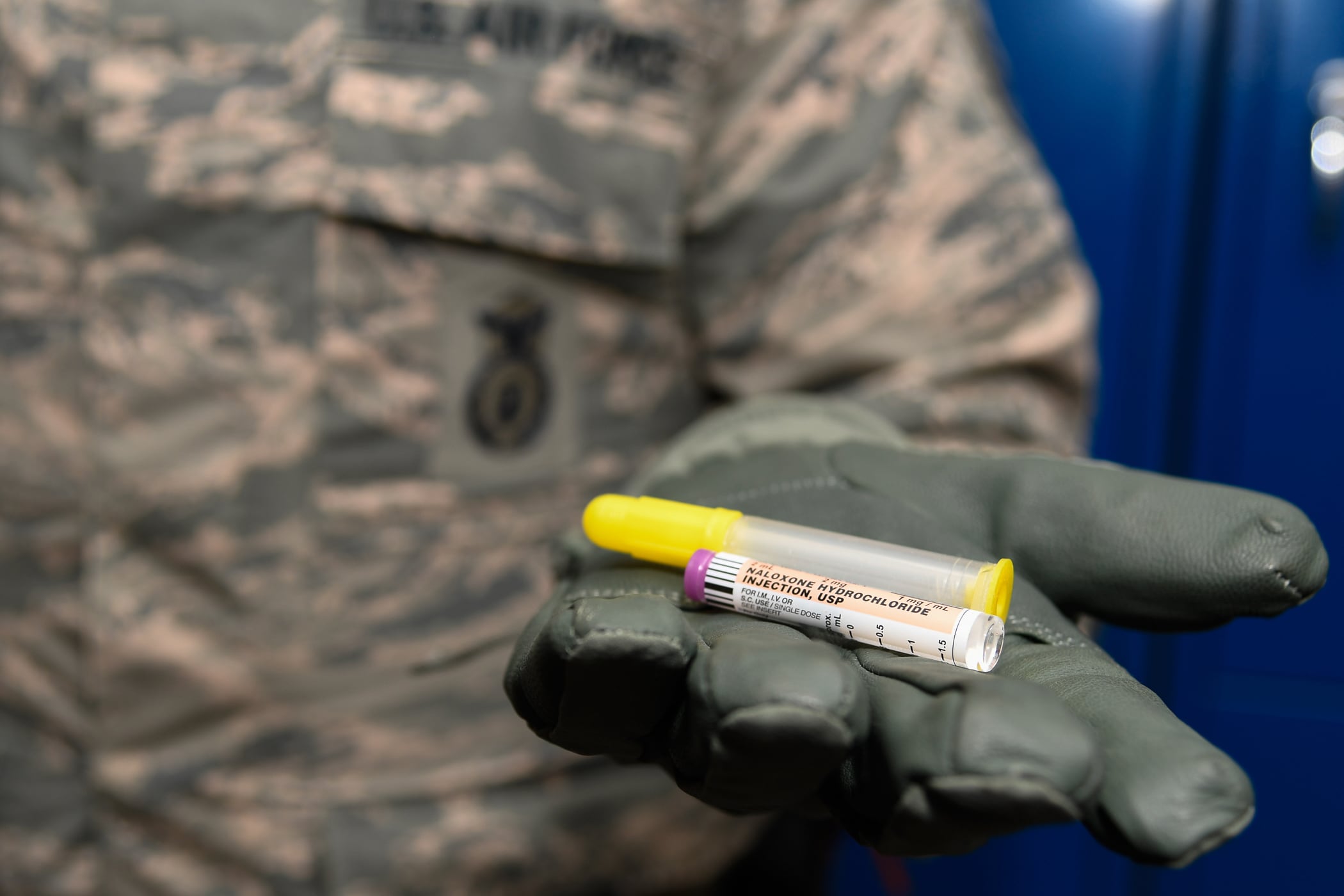Fentanyl, a drug that has gained widespread national attention in recent years for its role in the U.S. opioid epidemic, was involved in 174 overdoses, or about 52% of overdose cases, in the military between 2017 and 2021, according to Defense Department data. Fatal fentanyl overdoses more than doubled during that span, from 36% of overdoses in 2017 to 88% in 2021.
The Pentagon compiled the data as part of a request from a bipartisan group of senators in September. The data also show that while the Air Force and Army saw small increases in overall overdose deaths during that time period, those same statistics among Marines and sailors doubled.
“Our military is not immune to the opioid epidemic. We have lost countless service members to overdose, and if we fail to take action to protect those in uniform, we will lose countless more,” Sen. Ed Markey, D-Mass., said in a release Wednesday. “The Department of Defense’s latest report underscores the urgency of this moment and our need to ensure access to quality care and treatment without stigma or shame.”
Thousands of service members on active duty suffered drug and alcohol overdoses between 2017 and 2021, the data show, with 332 of those cases resulting in death. Overdose deaths represented 7% of all military deaths during that period.
Broken down, fentanyl was present in 73 cases, while another 101 involved another drug taken along with fentanyl. There were 45 cases, or about 14%, involving heroin.
Non-opioid overdoses included 84 cases — or 25% of all fatal overdoses — of mixed drugs, including alcohol, cocaine, diphenhydramine (an antihistamine) and other over-the-counter, prescription or illicit drugs. There were also 29 fatal incidents involving alcohol overdose, just under 9% of the total number.
Of the non-fatal cases, 22 involved fentanyl, though the data noted that the drug only received its own category in 2020. Overall opioid-involved overdoses totaled 1,010 cases between 2017 and 2022. Another 1,800 or so cases involved benzodiazepines, amphetamines, cocaine, LSD, cannabis and other narcotics, according to the report.
Another 13,284 cases were included in general categories, such as poisonings of an assortment of drugs and medications ― cough medicine, antipsychotics, and antiepileptics, for example ― 2,638 of which involved antidepressants.
RELATED

Numbers by service
The Army, which is at least twice the size as any of the other services, reported the most fatalities, at 171, or an average of 34 per year.
“The Army annual rate of fatal OD deaths remained relatively unchanged from 6.5 per 100,000 service members (36 deaths) in 2017 to 6.1 per 100,000 Service members (35 deaths) in 2021,” according to the report.
Over the same period, the Air Force reported 45 deaths, while the Marine Corps counted 36. The Navy, meanwhile, reported 80.
“Air Force deaths have increased slightly over time from nine deaths in 2017 to 11 in 2021,” according to the report. “During the same period, USMC and Navy OD deaths have doubled from five and [11] deaths, respectively, in 2017 to 10 and 21 in 2021.”
Young, white, enlisted men were disproportionately affected by fatal overdoses, according to the data. More than 80% were under 33, 77% were white, 16% Black and about 4% unknown. Enlisted personnel accounted for 96% of fatal overdoses, while men comprised 92.5% of that total.
By comparison, about 65% of the military is under 30 years old, 70% of the force is white, 80% is enlisted and 80% is male.
In response, according to the report, DoD is working to beef up prevention and treatment programs, but officials acknowledge that there is still stigma around seeking treatment for substance abuse.
“Addressing drug abuse and preventing overdose deaths in our force is a high priority for the Department of Defense,” Gil Cisneros, the Pentagon’s personnel boss, wrote in letters to the senators. “Every drug overdose is a preventable loss of life and we must work to do better. The Department continues to evaluate, refine, and improve strategies for overdose prevention to ensure we are making every effort to prevent these tragic deaths.”
Meghann Myers is the Pentagon bureau chief at Military Times. She covers operations, policy, personnel, leadership and other issues affecting service members.





